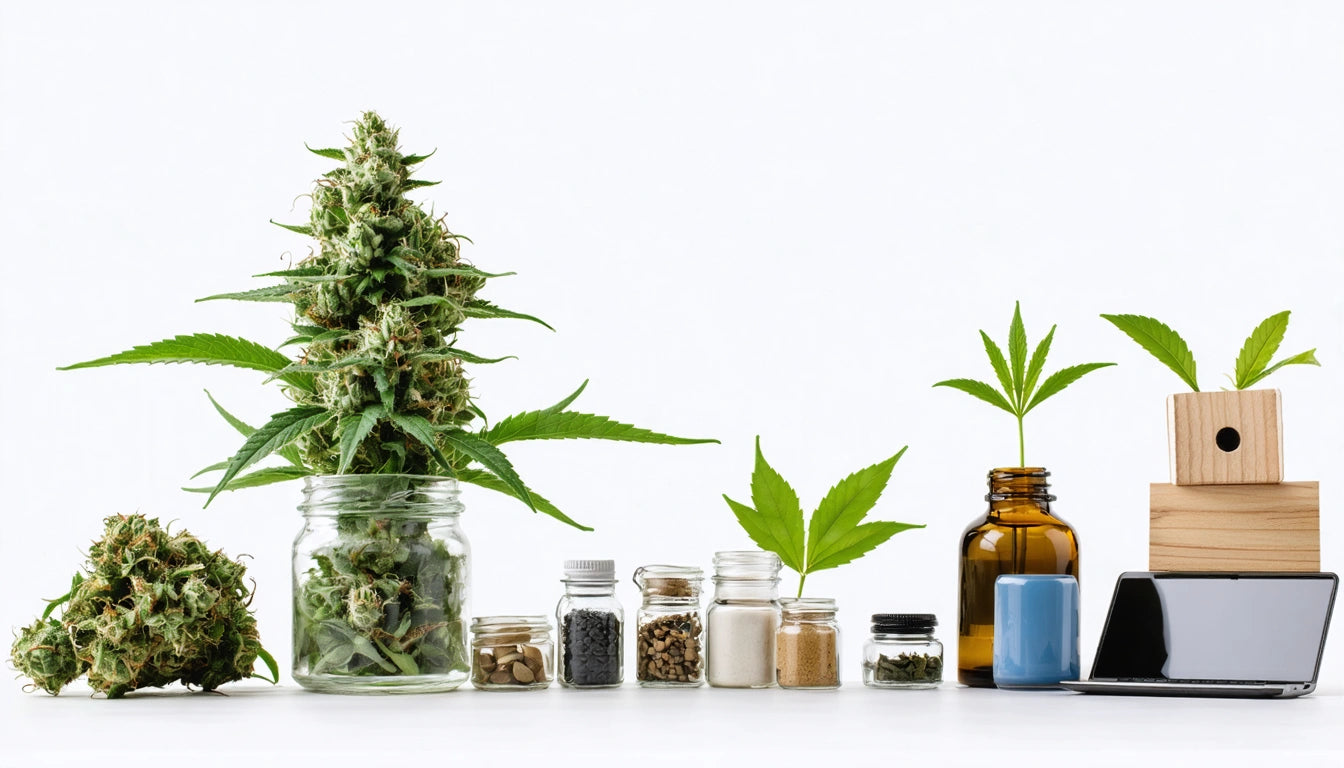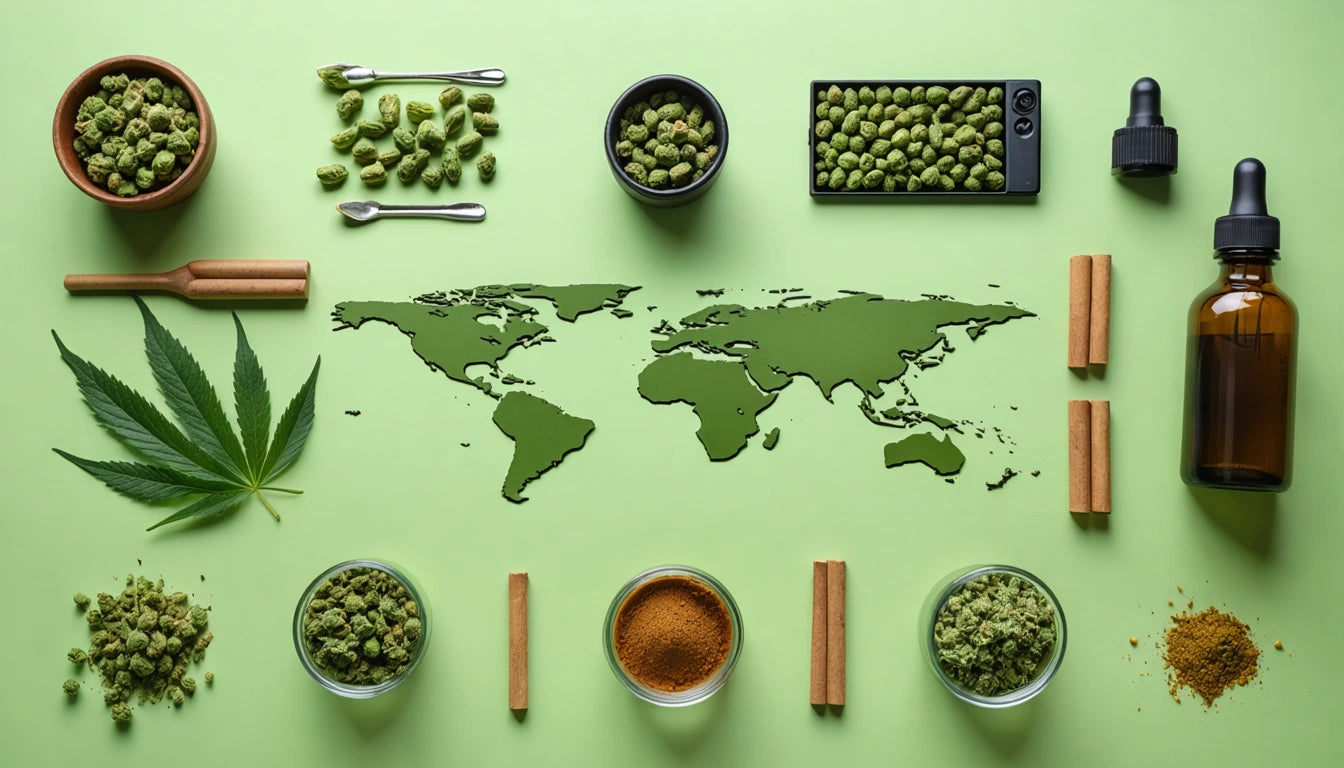Table of Contents
- Cannabis Taxonomy Basics: Understanding Strain Classifications
- Indica Characteristics: Effects, Physical Traits, and Use Cases
- Sativa Characteristics: Effects, Physical Traits, and Use Cases
- Hybrid Strains: Balanced Effects and Versatility
- Consumption Methods and How They Affect Experiences
- Choosing the Right Strain: Personalized Selection Guide
Understanding the Differences: Indica vs. Sativa vs. Hybrid Cannabis
Cannabis consumers often face confusion when deciding between indica, sativa, and hybrid strains. Each classification offers distinct effects, physical characteristics, and potential benefits. This comprehensive guide explores the differences between these cannabis types to help you make informed decisions based on your preferences and desired experiences.
Cannabis Taxonomy Basics: Understanding Strain Classifications
Cannabis taxonomy has traditionally divided the plant into three primary categories: Cannabis indica, Cannabis sativa, and hybrid varieties that combine genetics from both. While modern science suggests this classification may be oversimplified, these categories remain useful for consumers to predict effects and make purchasing decisions.
The difference between sativa, indica, and hybrid weed stems from their genetic lineage, growth patterns, and chemical compositions. Indica plants originated in the harsh mountain regions of Afghanistan, Pakistan, and India, while sativa varieties adapted to equatorial regions like Thailand, Mexico, and Colombia. Hybrids result from deliberate crossbreeding of these parent strains.
Indica Characteristics: Effects, Physical Traits, and Use Cases
Indica strains are known for their sedative, relaxing effects that primarily influence the body. Users often describe a "body high" that may help with sleep, pain relief, and muscle relaxation.
Physical Appearance
Indica plants typically display:
- Shorter, bushier growth pattern
- Broader, darker green leaves
- Denser, heavier buds
- Shorter flowering cycles (6-8 weeks)
As detailed in this comparison of indica and sativa plants, the physical differences are significant and often visible even to casual observers.
Common Effects
Indica strains generally produce:
- Deep relaxation and sedation
- Stress and anxiety reduction
- Pain relief
- Improved sleep quality
- Increased appetite
These effects make indica varieties popular evening choices, often referred to as "in-da-couch" for their tendency to promote relaxation and sometimes physical sedation.
Sativa Characteristics: Effects, Physical Traits, and Use Cases
Sativa strains typically provide energizing, cerebral effects that stimulate the mind rather than sedate the body. They're often preferred for daytime use and social activities.
Physical Appearance
Sativa plants generally feature:
- Taller, more slender growth
- Narrower, lighter green leaves
- Looser, lighter buds
- Longer flowering cycles (10-16 weeks)
According to this detailed explanation of indica vs. sativa differences, sativa plants can grow up to 20 feet tall in ideal conditions, much taller than their indica counterparts.
Common Effects
Sativa strains typically produce:
- Uplifted mood and energy
- Enhanced creativity and focus
- Reduced fatigue
- Increased sociability
- Cerebral stimulation
For consumers wondering what's better, hybrid or sativa, the answer depends on the desired experience. Sativas excel for productivity, creativity, and social situations, while hybrids offer more balanced effects.
Hybrid Strains: Balanced Effects and Versatility
Hybrid strains combine genetics from both indica and sativa varieties, creating balanced effects that can lean toward either parent's characteristics. Modern cannabis cultivation has produced countless hybrid varieties with precisely targeted effects.
Types of Hybrids
- Indica-dominant hybrids: Offer relaxation with some mental stimulation
- Sativa-dominant hybrids: Provide energy with some physical relaxation
- Balanced hybrids (50/50): Aim for equilibrium between mind and body effects
The difference between hybrid and indica strains lies primarily in the hybrid's more balanced effect profile. While pure indicas may cause significant sedation, indica-dominant hybrids often provide relaxation without complete couch-lock.
When considering what gets you higher between sativa, indica or hybrid, potency depends more on THC content and terpene profiles than strain classification. Many of today's most potent varieties are actually well-crafted hybrids that maximize desirable traits from both parent strains.
Consumption Methods and How They Affect Experiences
The differences between strain types can be further influenced by consumption method. When comparing hybrid carts vs. indica vapes or sativa vs. hybrid edibles, the delivery method significantly impacts onset time, duration, and intensity.
Consumption Formats and Strain Differences
- Flower: Most true-to-form expression of strain characteristics
- Vape cartridges: Often enhanced with specific terpenes to emphasize strain effects
- Edibles: Produce longer-lasting, more body-centered effects regardless of strain type
- Concentrates: Intensify characteristic effects of the source strain
For processing cannabis into various formats, proper grinding is essential. Our commercial-grade cannabis grinder machines ensure consistent particle size for optimal extraction efficiency and product quality across all strain varieties.
The difference between sativa, indica, and hybrid gummies often comes down to the specific cannabinoid and terpene formulations rather than the original plant material, as extraction processes can isolate specific compounds.
Choosing the Right Strain: Personalized Selection Guide
Selecting between indica, sativa, and hybrid varieties should be a personalized decision based on several factors:
Key Considerations for Strain Selection
- Desired effects: Relaxation, energy, creativity, sleep, or pain relief
- Tolerance level: Beginners may prefer balanced hybrids or lower-THC varieties
- Time of day: Sativas for morning/day, indicas for evening/night
- Medical needs: Specific symptoms may respond better to certain strain types
- Setting: Social gatherings vs. solo use
A sativa vs. indica vs. hybrid chart can be helpful for visualizing these differences, but remember that individual experiences vary significantly based on personal biochemistry, tolerance, and specific strain genetics.
While traditional wisdom suggests indicas for relaxation and sativas for energy, modern cannabis science increasingly focuses on cannabinoid ratios and terpene profiles as better predictors of effects than simple indica/sativa classifications.
The cannabis industry continues to evolve beyond simple categorizations, with many dispensaries now organizing products by effect profiles rather than traditional strain types. This approach acknowledges the complex interplay of compounds that create each strain's unique characteristics and helps consumers find products aligned with their specific preferences.











Leave a comment
All comments are moderated before being published.
This site is protected by hCaptcha and the hCaptcha Privacy Policy and Terms of Service apply.